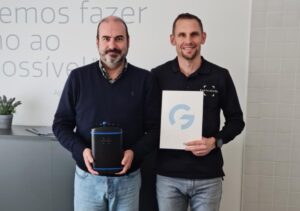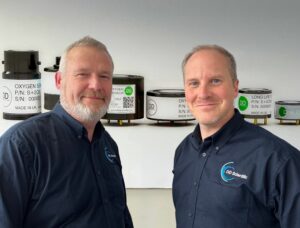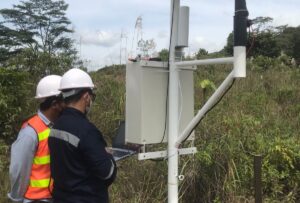Ad: Alphasense and the growth of air quality monitoring
When Alphasense first began trading in 1996 the company’s focus was on delivering accurate, repeatable and cost-effective sensors for the monitoring and detection of gases in the safety sector. 26 years on, whilst sensors for Safety devices still represents a significant proportion of business, they are also seeing a welcome growth in demand for their air quality sensors, something which reflects rising and widespread concerns about the air we are all breathing day to day, rather than just those exposed to specific risks.
Alphasense’s EMEA Sales and Marketing Director, Will Parrett, is quick to point out the differences between the two types of products. Specifically, the fact that air quality sensors are designed to target low-level background levels of pollution which are hazardous to human health over extended time periods. Whilst sensors for safety applications typically monitor gas levels in parts per million (PPM) in order to quickly identify immediate hazards and those present over an 8 hour shift, air quality specific sensors target parts per billion (PPB) in order to identify the low level background gases which cause harm due to long term exposure.
Whilst the safety sector has its own challenges, such as the need to balance weight / power consumption with the demands of hazardous area certification, the challenge for the air quality sector is the far narrower margins for error in PPB measurement, Air quality applications not only require a different grade of sensor to provide meaningful data but also more refined electronics and frequently complex algorithms in order to compensate for environmental factors.
The low-cost Air Quality monitoring sector is advancing rapidly but with many OEM’s still established less than 5 years ago, the costs of R&D and small batch production still weigh heavy on the device cost and ultimately on adoption. There are however signs of a shift in the market as larger player invest in the sector, allowing manufacturers to employ a longer term or data-focused view which is in turn making the tech more affordable.
As Parrett explains: ‘It’s something of a chicken and egg scenario in that mass adoption can’t happen without the cost of tech coming down, and OEMs need high volumes to bring those costs down. Legislation is not yet prescriptive enough to drive the volume, but a combination of increased awareness, corporate responsibility, and Clean Air Zones are increasing the prevalence of widescale air quality monitoring.
‘Increased investment in the sector will allow more manufacturers to evolve from R&D / start-up phase into commercially driven SMEs and I think this will create competition between manufacturers which will in turn drive innovation. For our customers, a lot of the focus is on signal conditioning, atmospheric compensation and data manipulation and this is where we can see some big steps forward being made,’ he continues. ‘Fundamentally, our role is to provide our customers with accurate, repeatable, and stable results and we are constantly working to enhance our offerings and the value they offer.’
Putting things into perspective, the gas safety sector has well over three decades of research and development behind it, while low-cost air quality monitoring has only really been a research concern for around ten years. Nevertheless, progress made during that time by firms like Alphasense is nothing short of impressive, and indicates a very real need for the products, with more and more customers – public and private – understanding why analysing atmospheric content is so important. In turn, this points to the continued rapid development of associated products and services to make monitoring more efficient, , affordable and – ultimately – accessible.
For more information, please visit www.alphasense.com
















